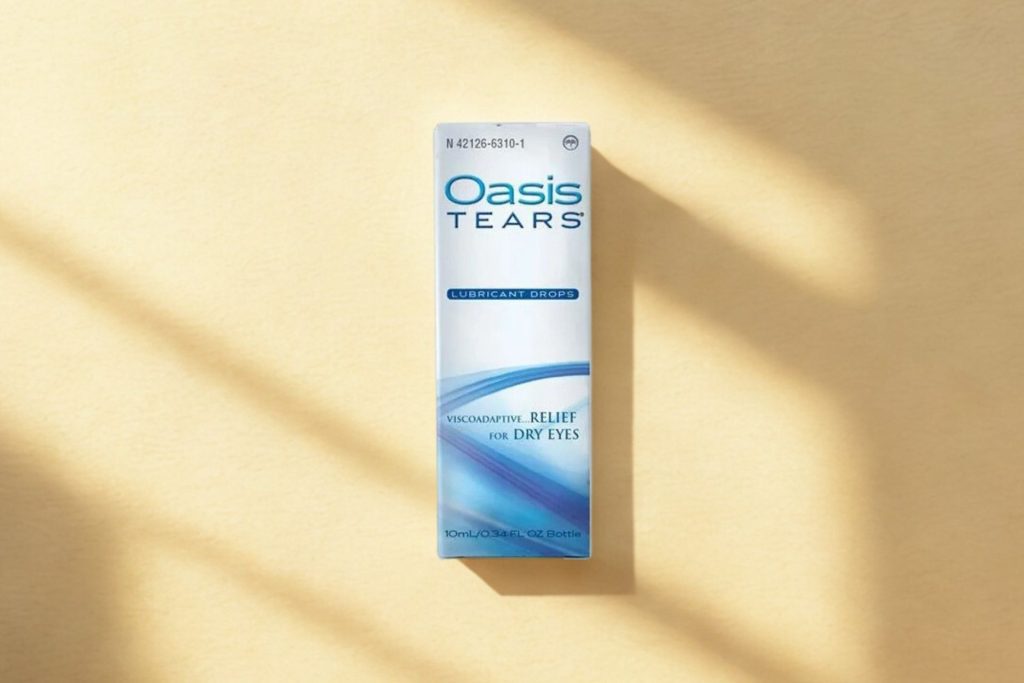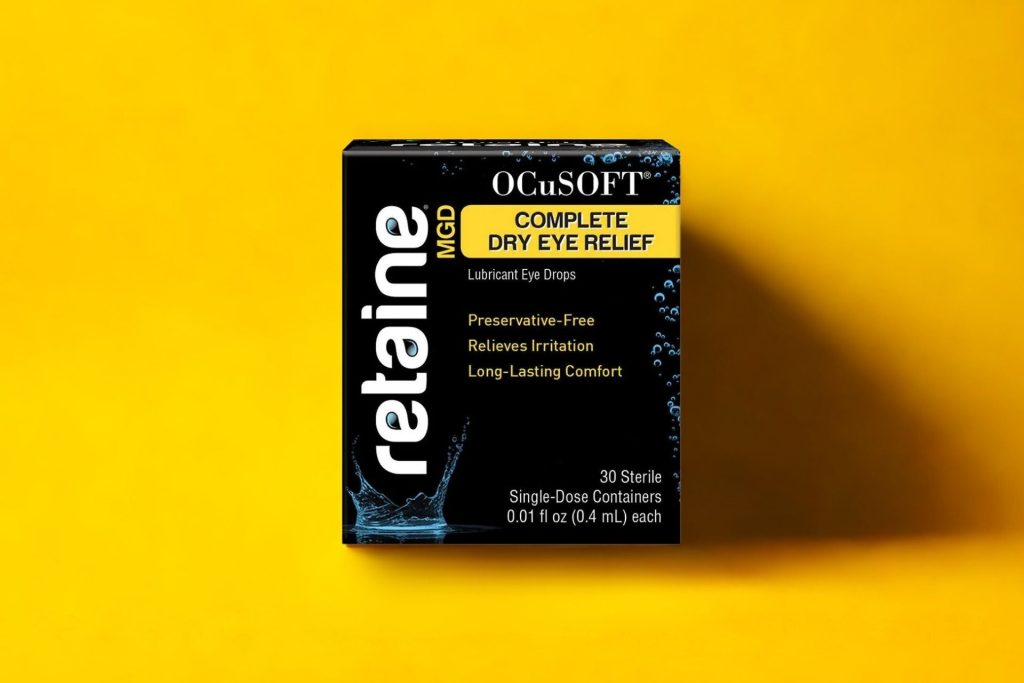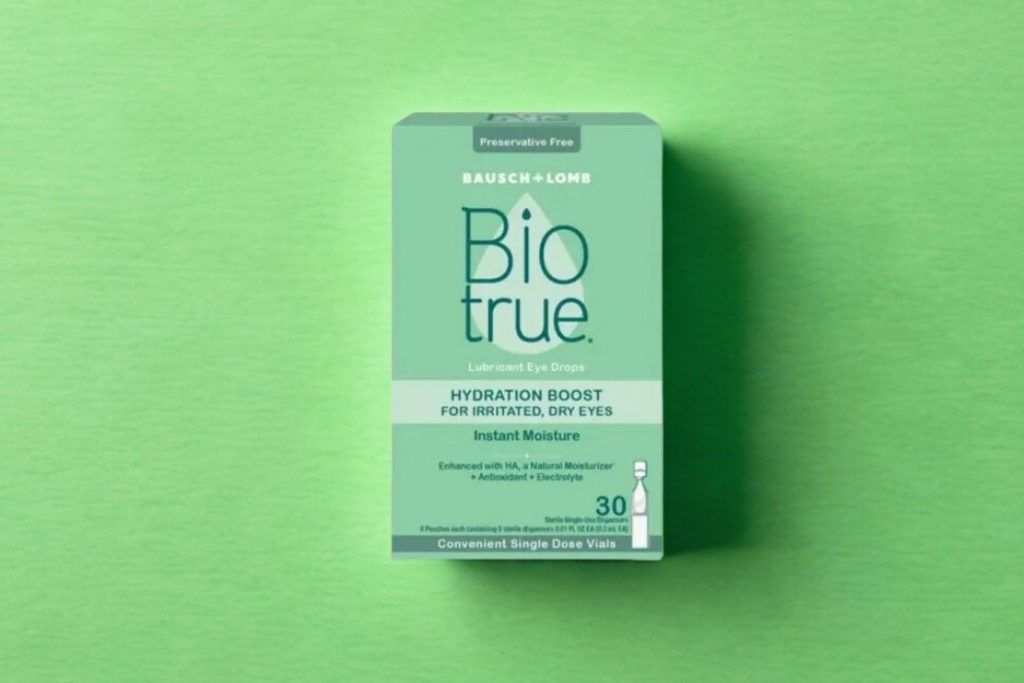![]()
Dry eyes are such a pain! If you’re like me, you wake up with stinging eyes. A trip to the bathroom to douse water over them doesn’t work. Sometimes, water makes the condition feel worse. Even after a good night’s sleep, your eyes feel tired. You are sensitive to light. And you may also feel some itchiness and a sandy feeling in your eyes.
These are just some symptoms of dry eyes and dry eye syndrome, a condition affecting up to 34% of the population and up to 70% of older people.
Despite these staggering statistics, many people choose to ignore their dry eyes. Or, they don’t book an appointment with their eye doctor to get a proper diagnosis and prescription. It is tempting to self-diagnose and just choose from the many over-the-counter eye drops for dry eyes. But do you know which ones to choose? And do they really work?
What Is Dry Eye Syndrome?
Tears are your eyes’ natural lubricants. Dry eyes or dry eye syndrome (DES) occurs when you don’t have enough tears to keep your eyes moist and comfortable. Certain physiological, lifestyle, and external conditions can limit that ability. What results are symptoms like these:
- Gritty, uncomfortable feeling
- Stinging or burning sensation
- Redness and/or itchiness
- Blurred vision
- Tiredness of the eyes
- Mucus in or around the eyes
- Sensitivity to light
A surprising additional symptom of dry eyes is watery eyes. Yes, it is a paradox. Dry eyes can irritate the eyes so much that they begin to water. However, these tears aren’t comfortable. They may even sting or burn.
Possible Causes of Dry Eyes
Several factors can lead to dry eyes or dry eye syndrome, and they include the following:
- Not Producing Enough Tears: When you don’t make enough of the eyes’ natural lubricants, your eyes begin to dry up.
- Poor Tear Quality: Your tears might not contain the right balance of oils, mucus, and water. They may also evaporate too quickly.
- Environmental Factors: Your location might also be affecting your dry eyes. You might develop dry eyes in a humid environment, or somewhere you’re often exposed to the hot sun and dry air. Even being in an air-conditioned space can worsen your DES.
- Lifestyle: If you spend too much time in front of a screen or under the sun and don’t protect your eyes, you might develop dry eyes. The same goes for not getting enough sleep and straining your eyes regularly.
- Underlying Medical Conditions: A few autoimmune diseases, like rheumatoid arthritis and Sjögren’s syndrome, can lead to DES.
Eye Drops for Dry Eyes: Your Options
There are several eye drops for dry eyes options in the market. A few of these require your doctor’s prescriptions; others, you can get over the counter.
Artificial Tears
These are some of the more popular drops for dry eyes. They’re easy to get hold of and are your cheapest option. These usually contain ingredients, such as saline, hyaluronic acid, and other polymers, that provide temporary lubrication and comfort. They are designed to mimic tears.
Artificial tears are temporarily effective but generally only suitable for short-term relief. Choose these if your DES is mild or moderate. They’re good to have in your dry eyes first aid kit.
Oasis TEARS Lubricant Eye Drops

Oasis TEARS Lubricant Eye Drops are reliable eye drops for dry eyes, especially when you need instant relief from dry, irritated eyes. These can help refresh the eyes and relieve the gritty, itchy feeling. The 10 mL package is a convenient on-the-go option.
TheraTears Dry Eye Therapy Lubricating Eye Drops, Daily Use

TheraTears Dry Eye Therapy Lubricating Eye Drops use an artificial tears formulation that includes five electrolytes found in natural tears. This is designed to correct any salt imbalance and give you immediate dry-eye relief.
Preservative-Free Artificial Tears
Preservative-free artificial tears for dry eyes are intended for multiple uses daily, which makes them ideal for people who frequently need immediate DES relief. They are gentle on the eyes while providing quick comfort.
OCuSOFT Retaine MGD Lubricant Eye Drops

Retaine MGD Complete Dry Eye Relief is an ophthalmic formulation that replenishes the eyes’ lipids. It uses positively charged droplets to meld with the eyes’ negatively charged eye surfaces, which Retaine calls electrostatic attraction. This provides long-lasting comfort from the symptoms of dry eyes.
Biotrue Hydration Boost Lubricant Eye Drops

Biotrue Hydration Boost Lubricant Eye Drops are formulated like natural tears to maintain the pH balance of your eyes. They contain natural ingredients like glycerin (a natural sugar alcohol compound) and hyaluronan (a naturally occurring complex carbohydrate) and offer long-lasting eye rehydration relief.
Restasis (Cyclosporine)
Unlike regular and preservative-free artificial tears, Restasis eye drops for dry eyes are prescription medications designed to improve tear production within a few weeks. They do not provide instant relief. If you want to try these out, book an appointment with your eye doctor.
Xiidra (Lifitegrast)
Like Restasis drops, you need a prescription from your eye doctor to try out Xiidra eye drops. This medication is designed to lessen eye inflammation, reducing dry eye. If your dry eye syndrome is caused by underlying inflammation, this can provide you with long-term relief. Talk to your doctor about this.
Other Prescription Medications
There are more prescription eye drops that can relieve DES, so be sure to ask your doctor for specific recommendations based on the underlying cause of your dry eyes. Causes can even include anti-inflammatory steroids and antibiotics.
Choosing the Right Eye Drops for Your Dry Eyes
Several considerations are involved when choosing the right DES-relief eye drops. You must consider the severity of your dry eyes and the underlying cause of your eye condition.
Likewise, consider how often you experience dry eyes; if you frequently use eye drops during the day, you will probably need milder preservative-free formulations.
You can safely choose any of the over-the-counter eye drops for dry eyes. They are formulated for immediate yet temporary relief.
However, if you experience persistent DES, blurry vision, and excessive eye redness and pain, or suspect that an underlying condition causes your dry eyes, see your doctor immediately.


